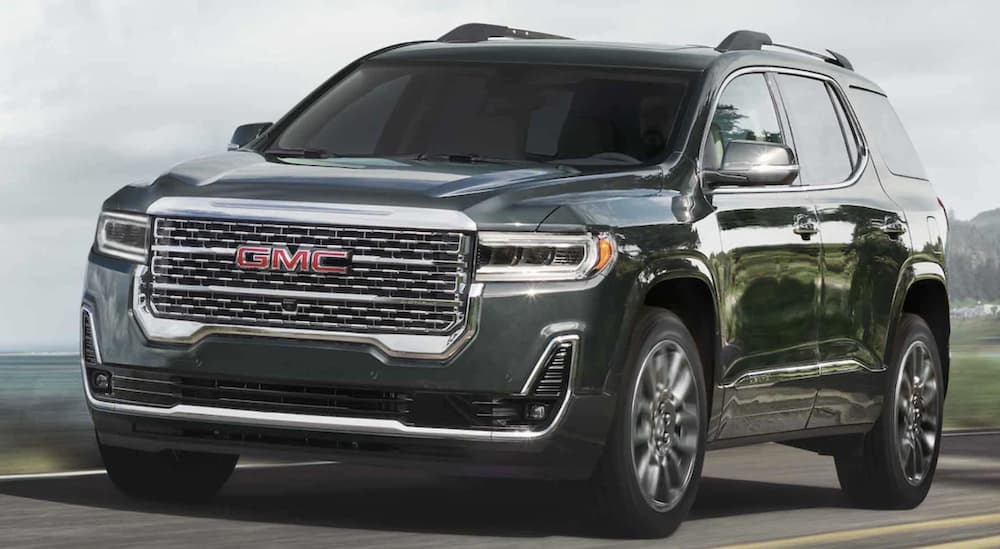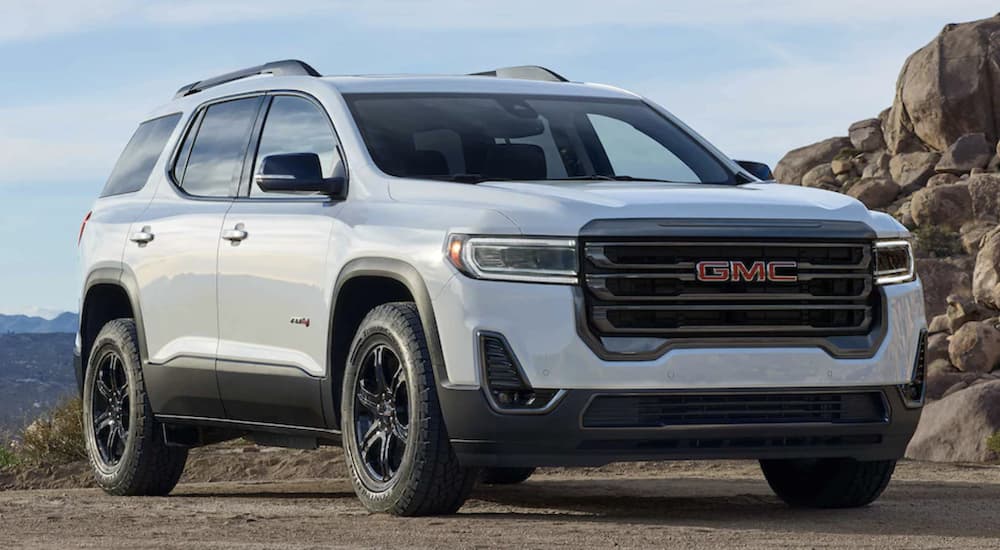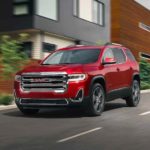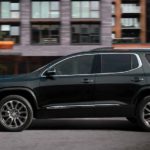Mid-size SUVs are often more capable than drivers realize. These vehicles often fall into the pattern of being used for daily commutes without being given the opportunity to exercise all they have to offer. The 2023 GMC Acadia is a mid-size SUV that caters well to young families. It also has the capability to provide for more adventurous excursions; however, the driver must understand how to use the tools the vehicle provides in order to maximize its performance. As auto enthusiasts know all too well, you don’t reach your vehicle’s maximum capability simply by pressing down a little further on the gas pedal; it is about knowing when and how to use the right features to optimize your vehicle for the circumstances at hand. The 2023 Acadia provides great tools for all kinds of circumstances, so let’s look at the new Acadia’s performance.
A Wide Range of Performance
The engine is the heart of the vehicle. As such, all vehicle performance is rooted in engineering. The 2023 Acadia has two engine options: the 2.0-liter Turbo I-4 engine (standard on SLT and SLE trims) and the 3.6-liter V6 engine (standard on Denali and AT4 trims). The big benefit of the Turbo engine is, of course, the twin-scroll turbocharger. This will give you some great propulsion for a fun ride. But, since the AT4 is the trim known for its performance and off-roading capability, you may have connected the dots that the V6 engine is the one with better performance specs. Though the first hint was probably not that it’s used on the AT4 trim but simply that it is a V6 engine, the six-cylinder design certainly makes for heightened performance.
The V6 engine is paired with 9-speed automatic transmission, producing up to 310 hp and 271 lb-ft of torque; good numbers for a mid-size SUV. Part of the vehicle-buying game is determining what is most important; sometimes, drivers want the highest and best performance specs, but their family situation demands that the vehicle purchased be a vehicle which doesn’t quite reach that level. The truth is, though, that most drivers looking at vehicles in the class of the Acadia probably won’t be maximizing their performance specs, even if they were higher; even on a vehicle that offers 400 hp or more, those numbers are likely not tapped into with tremendous frequency. So, knowing how to make the most of the performance specs in the vehicle your situation requires can help you have the driving experience you desire without even knowing the difference sometimes.

Understanding the FWD, AWD, and Traction Select Systems
One of the most important things for drivers to understand when seeking to maximize performance is that different terrains require different kinds of driving. Off-roading is not the same as on-road driving, and driving in a snowstorm is not the same as driving on desert sand. People often talk about all-wheel drive (AWD) as if it is objectively better than front-wheel drive (FWD). While there is truth in this, it is not as objective as it can sometimes seem based upon mere word of mouth.
Sure, if you’re planning on off-roading with your vehicle, there is no question that AWD is objectively far better and necessary compared to FWD. But, if you’re not off-roading at all, and the vehicle is going to be used mainly for highway driving, then there may be a solid argument for FWD or AWD. The Acadia offers both, but that does not automatically mean that your vehicle is ready for any terrain. If your car is completely monotone in its driving capability, you will never be able to truly maximize performance because your car is unable to adjust based on what your driving situation demands. The Acadia, however, is ready to go with its Traction Select System.
The Traction Select System appears as nothing more than a small knob on the vehicle’s center console, but a turn of that knob radically changes the driving experience. This knob allows the driver to select different drive modes, which adjusts the vehicle’s performance to suit the road conditions. Front-wheel drive models offer four modes: normal, Snow, Sport, and Trailer/Tow, while all-wheel drive models offer three modes: Sport, Off-Road, and Trailer/Tow.
The good news is that no matter which model you have, you’ll be able to have optimized towing. If you tracked the differences, you may have noticed that the big difference is FWD offers snow while AWD offers off-road. While this is a difference, there are certainly similarities between driving in snow and off-roading, so having the off-road mode will likely help in snow as well. It ultimately depends on the kinds of adventures you are seeking, but if you are looking to optimize the performance of your Acadia, the best way to go is an AWD model; this will broaden your horizons and will give you the leverage you need if you want to hit the trails or otherwise take your drive to the next level.
Take Advantage of Hill Start Assist and Descent Control’s Added Stability
You may have heard of these features, as they are becoming more and more common on larger vehicles. With cutting-edge brake technology, Hill Start Assist holds the brakes during the transfer from the brake pedal to the gas pedal, while Hill Descent Control uses anti-lock braking to make sure descents are smooth. These are always helpful, of course, but they really come in handy when towing. Going uphill and downhill are each challenging in their own way when you’ve got a trailer attached to your vehicle, but these technologies certainly help to reduce the challenge.
Both of these braking features are helpful in off-roading as well. You may not need it for a basic suburban ascent, but when you’re hitting the dusty trails and there are obstacles to clear while you’re going up or downhill, these technologies help make the ascent or descent easier. That’s why these features come standard on the AT4 trim!
Enjoy a Smoother Ride With Adaptive Ride Control
This technology is reserved for the Denali trim, transforming the Acadia into a luxury SUV. Now, performance and luxury design intermingle in one very important way: smoothness. You can have all of the luxury features you want, but if the ride itself isn’t smooth, those luxury features won’t feel as smooth either. That’s where Adaptive Ride Control comes into play.
This innovative performance technology adjusts shock absorber damping forces every two milliseconds. I will remind you here that a millisecond is one-thousandth of a second. That is ridiculously frequent adjustment, and it’s the best kind of ridiculousness there is. With these frequent damping adjustments, the smoothness of the ride and the refinement of the design will work together to pull the driver into a truly enjoyable driving experience. Adaptive ride control is included with the Denali Ultimate Package and AWD models. If you start to add up the benefits of the AWD models, you may be more and more convinced that that is the way to go. Just sayin’.
It’s About Maximizing Optimization
The Acadia, unsurprisingly, can perform very well in a variety of circumstances. We say “unsurprisingly” because GMC is known for performance; it’s their thing. GMC vehicles, in this case, the Acadia, are unique because they have their four main trims, which are present across the entire lineup: the SLE, SLT, Denali, and AT4. Some features are specifically reserved for one of these trims, meaning that you could have two completely different driving experiences in the same vehicle. Performance is not a one-size-fits-all component of driving; different drivers have different performance desires, and the different Acadia trims cater to different types of drivers. But one thing is for sure: no matter which trim you have, you’ll be able to maximize your performance by using the vehicle’s built-in tools at the right place and the right time.





